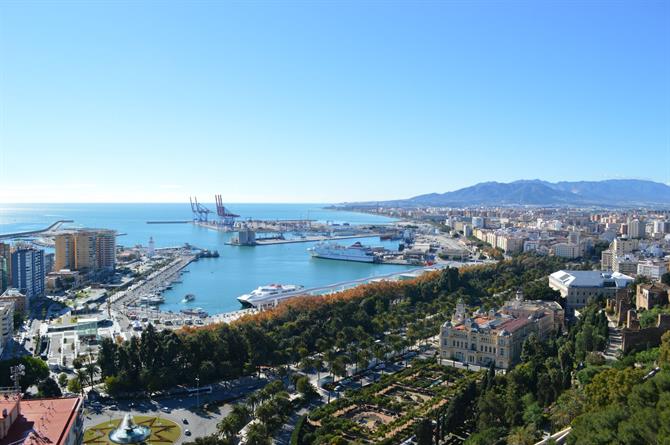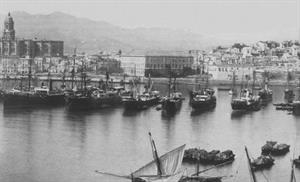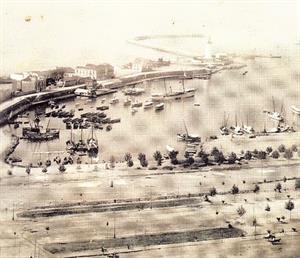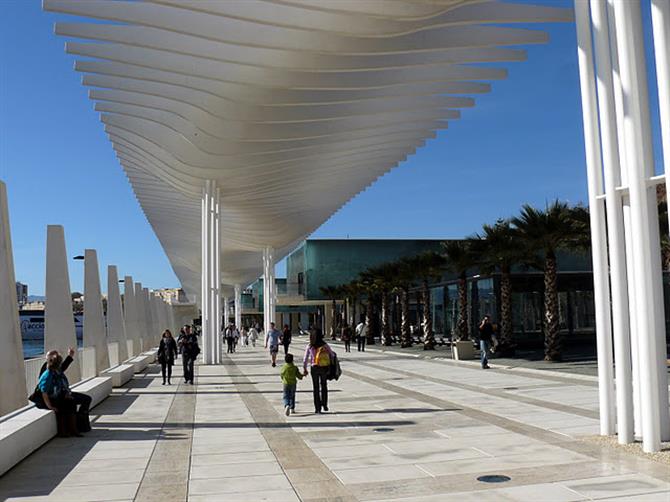The city has a population of close to 570,000 in 2012, making Malaga is the second most populated city within Andalucia and the sixth largest in Spain. Malaga enjoys the warmest winters in Europe, with average temperatures of 17.2C during the months of December to February. Its southerly location, the strong maritime influence from the Mediterranean and the protection offered by the Montes de Malaga, which act as a barrier against weather systems from the north, all combine to give Malaga a fantastic year round climate.

One of the world’s oldest cities
Malaga is one of the oldest cities in the world with close to three thousand years of history.
The Phoenicians originally founded a commercial center here in early 7C BC, which they named Malaca. The name is most probably derived from the word Malac – to salt. The Greeks and Carthaginians were briefly present and further established Malaca as a trading post. In 3C BC the Romans conquered the city and a created a colony that was federated to Rome until AD81, whereupon it attained the status of a Roman municipality. The city was renamed Flavia Malacita and quickly grew in importance, with the port used to export oil, raisins, wine and salted fish and meat. Malaga’s port and the Roman amphitheatre were constructed during this time.
Moorish rule
 Following the Moorish conquest – 714-716 – the city came under the jurisdiction of the Caliphate of Córdoba.
Following the Moorish conquest – 714-716 – the city came under the jurisdiction of the Caliphate of Córdoba.
With the rise and fall of various Muslim dynasties, the city eventually fell under the control of the Nasrids, in Granada. Malaga became the main port and the city was called Mālaqah. Enjoying great prosperity during this period, mainly due to the development of it’s textile industry. The fortress – the Alcazaba was built in 11C and in 14C the Gibralfaro fortress was rebuilt and extended by Yusif I.
The Christians
It took close to a hundred years before the Christians managed to re-conquer the city. Finally doing so in 1487. The new port was built and with the liberalisation of trade with the Americas, Malaga prospered. Between 1810 and 1812 the city fell into the hands of the French. Another important and sad event in Malaga’s history was the execution of General Torrijos and his companions in 1831 (remembered by the monument in Plaza de Merced named after him).
Nineteenth and twentieth centuries


The 19C was the era of the industrial revolution. Two wealthy families, the Heredia (iron and steel) and the Larios (textiles) based their factories in Malaga.
Malaga was at the forefront of the Spanish industrial revolution, resulting in a large manufacturing and working-class district to the West of the city. Towards the end of the 19C, recession brought about a sudden change of fortunes.
The early 20C were very difficult times, with various natural disasters – earthquakes, plagues and failed harvests, that all took a heavy toll on the local population. The political instability in this period culminated with the Spanish civil war. Malaga suffered terribly during the Civil War, eventually falling to pro-Franco forces on February 8, 1937. This sparked one of the most horrendous crimes that took place during the whole war, aptly named as the "caravan of death." Over 120,000 people, many of them civilians, were forced to abandon the city by foot, along the old Almeria road (N340) attempting to walk a distance of over 200kms. They were under constant fire from Franco's troops (backed by Italian and German aerial and marine forces) from the sea, the air and on land. Many thousands of innocent civilians lost their lives enroute and afterwards. The 'Desbandá' is commerated yearly in Torre del Mar on Feburary 7th.
Modern day Malaga

The 1950s were the beginnings of new era for Malaga and the Costa del Sol. Tourism was just beginning to take hold and proving to be an invaluable injection into the local economy.
Wandering around Malaga today is like walking around an open air museum with Phoenician, Roman, Moorish and Christian influences. This rich artistic heritage has placed Malaga firmly on the map as the cultural tourist destination for 2014.
For additional information and video about Malaga and recent articles about Malaga city.
